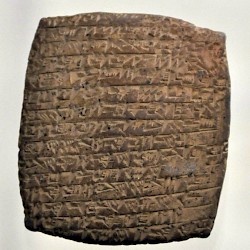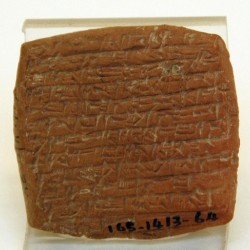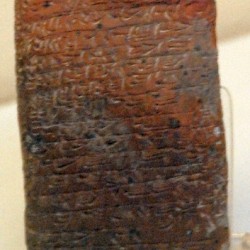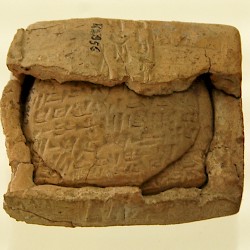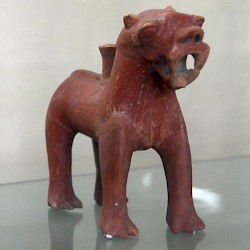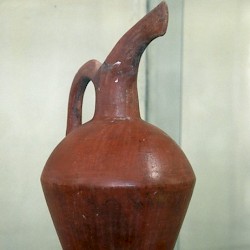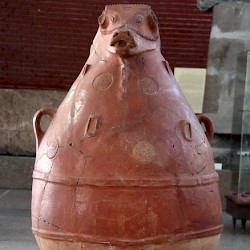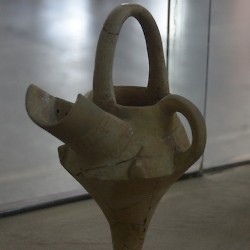Kaneš (Kültepe)
Q538605Kaneš or Neša: central town in the Middle Bronze trade network of Anatolia, with several palaces and an Assyrian trading post (modern Kültepe, twenty kilometers northeast of modern Kayseri).
Early History
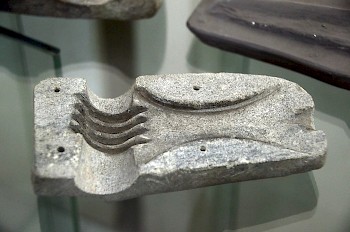
Situate between the basins of the Upper Euphrates, the Upper Halys, and the rivers of Cilicia, Kaneš could, at the beginning of the second millennium BCE, only be the central place of an Anatolian trade network. A merchant from Aššur, the capital of Assyria, would pass through six identified towns between the Euphrates and Kaneš, where he would meet colleagues from the east (two identified towns), northwest (nine towns, including Šapinuwa, Alaçahöyük, and Hattusa), southwest (five towns), Cilicia (unclear) and Syria (four towns, including Tadmor). If we would look for texts that document the emergent international trade, it would be at Kültepe, and it is hardly a surprise that so far, more than 23,000 tablets have been excavated.
Kaneš consists of two parts: the hill and the plain. The hill, with a circumference of about two kilometers, has (with interruptions) been inhabited from the Early Bronze age until the Roman period, while the settlement in the plain was especially important in the first quarter of the second millennium BCE, when Assyrian merchants used it as a village of their own. This commercial settlement is usually called the karum, a word that originally referred to a quay but could be used to indicate every place where merchants met. From the tablets, we learn that the Assyrian mule caravans arrived with tin, textiles, and (woolen) clothes, and that the merchants bought copper, silver, and gold.
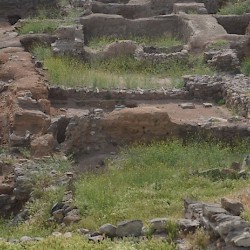 Kanesh, Palace of Inar |
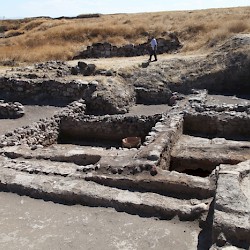 Kanesh, Palace of Waršama |
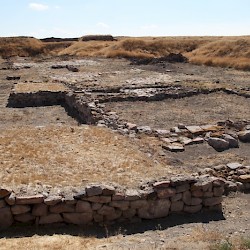 Kanesh, Tower |
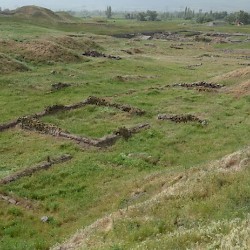 Kanesh, Palace of Anitta |
Tablets
More than 23,000 clay tablets from some seventy archives have been excavated; most of them have been found in the karum and date to period II (c.1950-c.1840 BCE). The tablets provide evidence for all kinds of aspects of ancient trade: e.g., loans or the costs of a caravan. However, much of the merchants' personal lives has been documented as well. Several of them were married to local wives and it is very interesting that in wills and in divorce acts, the women of Kaneš appear to have equal rights.
The Rise of the Hittites
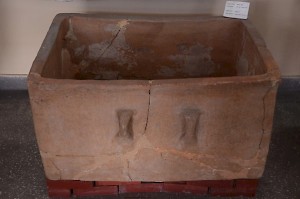
There was a major crisis in the mid-nineteenth century BCE, when the hill town was unexpectedly and probably violently destroyed. The inhabitants were unable to carry their possessions away, which explains why so much beautiful pottery has been excavated. King Waršama, son of Inar, rebuilt the palace with wood that can dendrochronologically be dated to about 1840 BCE.
One generation later, we learn that a king Pithana of Kussara has seized power in Kaneš. His son Anitta made the city, the center of an international trade network, his capital and went on to conquer Hattusa, which he called an accursed city that was never to be inhabited again. The ruler of three states in central Anatolia, he started to call himself "great king". After about 1730 BCE, we have no evidence for activities in the karum. Probably, king Anitta put an end to them in some way or another.
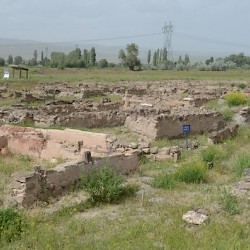 Kaneš, Remains of the "karum" |
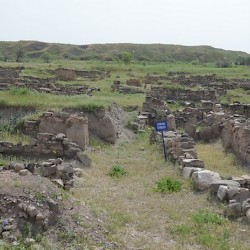 Kanesh, Karum, Street |
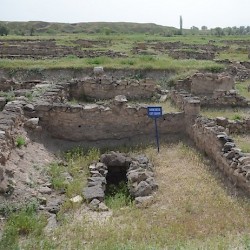 Kanesh, Karum, Cist grave |
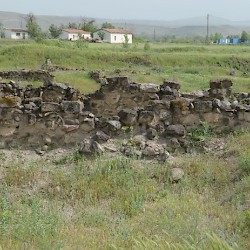 Kanesh, Karum, Traces of fire |
In spite of the fact that Hattusa was a cursed town, one of Anitta's descendants made it his capital and called himself Hattusili (r.c1650-c.1620 BCE): the beginning of the Old Hittite Kingdom. By this time, Kaneš or Neša (as the Hittites' first capital was now called) was in decline and there are no indications that it was inhabited in the Late Bronze Age, when the Hittites were master of a large empire.
Later History
Kaneš was resettled in the Iron Age, and must have been an important town in Tabal, a state that would later be incorporated in the Achaemenid Empire as Cappadocia. In the Hellenistic age, Anisa was still a town of some importance, but it was eclipsed by Mazaca, the capital of Cappadocia (modern Kayseri). In the Roman age, Anisa was a small village, problably abandoned before 200 CE.
| Dates | Hill | Plain | Description | |||
| Until 180 CE | 1-2 | Cemetery | Roman village | |||
| After 323 BCE | 3 | Cemetery | Hellenistic town Anisa | |||
| Gap | ||||||
| 900-700 BCE | 4-5 | - | Iron Age town in Tabal | |||
| Gap | ||||||
| c.1730-c.1550 | 6 | Ia | Old Hittite village Neša | |||
| c.1840-c.1730 | 7 | Ib | City Kaneš with Assyrian karum | |||
| c.1950-c.1840 | 8 | II | City Kaneš with Assyrian karum | |||
| Before c.1950 | 9-10 | III-IV | Middle Bronze settlement | |||
(All dates approximate.)
 Anisa, Neo-Hittite relief of a hunter-god |
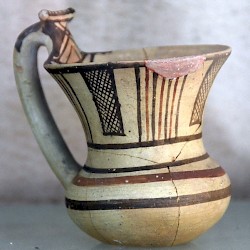 Anisa, Iron Age jar |
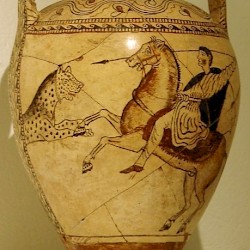 Anisa, Amphora with a hunting scene |
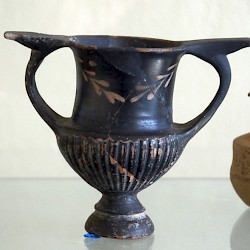 Anisa, Roman kantharos |
